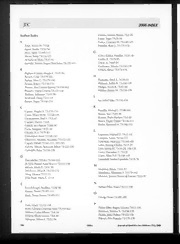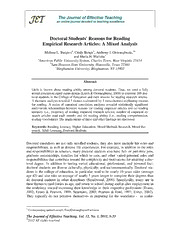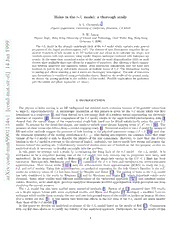
Holes in the t-J_z model: a thorough study PDF
Preview Holes in the t-J_z model: a thorough study
Holes in the t-J model: a thorough study z A. L. Chernyshev† Physics Department, University of California, Riverside, CA 92521 P. W. Leung Physics Dept., Hong Kong University of Science and Technology, Clear Water Bay, Hong Kong 9 (February 1, 2008) 9 9 The t-Jz model is the strongly anisotropic limit of the t-J model which captures some general properties of the doped antiferromagnets (AF). The absence of spin fluctuations simplifies the an- 1 alytical treatment of hole motion in an AF background and allows us to calculate the single- and n two-hole spectra with high accuracy using regular diagram techniquecombined with real-space ap- a proach. At thesame time, numerical studies of this model via exact diagonalization (ED) on small J clusters show negligible finitesize effectsfor anumberof quantities,thusallowing a direct compar- 4 ison between analytical and numerical results. Both approaches demonstrate that the holes have 1 tendency to pair in the p- and d-wave channels at realistic values of t/J. The interactions leading to pairing and effects selecting p and d waves are thoroughly investigated. The role of transverse ] l spinfluctuationsisconsidered usingperturbationtheory. Basedontheresultsofthepresentstudy, e - we discuss the pairing problem in the realistic t-J-like model. Possible implications for preformed r pairs formation and phase separation are drawn. t s . t a m - d I. INTRODUCTION n o c The physics of holes moving in an AF background has received much attention because of its possible connection [ to high-T superconductivity. A microscopic realization of this physics is given by the t-J model which was first c introduced as a conjecture [1], and then derived as a low-energy limit of a realistic model representing the electronic 1 v structure of cuprates [2,3]. Recent comparison of the t-J model results to the angle-resolved photoemission data [4] 4 showed that the overall shape of the experimental single-hole band can be fitted satisfactorily using the pure t-J 1 model. To accountfor the detail line shapes, one needs to include more distant hopping terms (t′, t′′, etc.) [5,6]. The 1 presenceofthese termsalsofollowsfromacarefulmappingstudy[6]. Numericalstudies ofthet-J modelbymeansof 1 ED and other methods suggest the presence of hole binding in the physical parameter range t/J 3 [7–9], and that 0 ∼ 9 the dominant symmetry of the pairing correlationis dx2−y2. This finding also supports the common belief that some variant of the t-J model is able to describe the physics of the real compounds. However, to show that this d-wave 9 / binding in the t-J model is relevant to the physics of high-Tc materials,one has to clarify how strong and generic the t a reasonsbehind this pairing are. Unfortunately, numericalstudies alone are of limited use for this purpose, so that an m analytical study is necessary to develop an insight into the problem. In this paper we attempt such a study by investigating the Ising limit of the t-J model – the t-J model. It is - z d well-known to be a simplified limiting case of the t-J model, but only recently has its properties been fairly well n understood. In the pioneering work by Bulaevskii et al [10] the single-hole energy in the t/J 1 limit has been o ≪ calculated. Subsequently, Brinkmann and Rice [11] considered the J = 0 limit and introduced the retraceable-path c approximation. More recent works [12–16] used the self-consistent Born approximation (SCBA) to study the t-J , : z v t-J, and t-t′-J models. Using this approximation, an analytical expression for the hole Green’s function in the t-J z i X model for arbitrary values of t/J has been found by Starykh and Reiter [17]. The pairing of holes in the t-Jz model has been considered in the works by Trugman [18] and by Shraiman and Siggia [19], where important results were r a obtained. Some other studies used different modifications of the variational approach [20,21] and obtained similar results. However,as we shall show, previous analytical treatments involvedapproximationwhich preventedone from obtaining the correct answers. The t-J model has also been studied using numerical methods [7]. Barnes et al [22] compared their ED results z on a 16-site square lattice with some analytical results, and Riera and Dagotto [23] developed a modified Lanczos techniquewhichenablethemtostudytheone-andtwo-holegroundstatesofthemodelonlatticesaslargeas50-sites. (For a review see Ref. [7]). It was shown that finite-size effects in the ED data of the t-J model are much smaller z than those of the t-J model [23]. In this paper we develop an analytical treatment of the t-J model based on the results of Ref. [17]. Comparison z with our ED data allows us to justify the validity of this analyticalapproach. Furthermore,we use the results of this 1 study to shedlight onthe problemofwhether the pairingin the d-channelis a generic feature oft-J-like models,and what interaction defines the symmetry of the ground state of the system. Our numerical ED results for the t-J model are obtained on a 32-site square lattice using the same method as in z Refs. [31,32]. This is up to now the only ED results on the largest lattice. This numerically exact method allows us to analyze various properties of the single-hole ground state as well as the two-hole bound states with different symmetries. Our paper is organized as follows. Sections II and III describe the representation and Feynman rules used in this paper. In Sec. IV we solve the single-hole problem and compare the results to ED data. In Sec. V the two-hole problem is considered in detail. In Sec. VI we summarize our results and draw conclusions. II. REPRESENTATIONS OF THE HAMILTONIAN AND OPERATORS The Hamiltonian of the t-J model is z 1 = t (c˜† c˜ +H.c.)+J SzSz N N (1) H − iσ jσ i j − 4 i j hXijiσ hXi,ji(cid:2) (cid:3) where the summation runs over nearest-neighbor bonds ij , c˜† = c† (1 n ), c˜ = (c˜† )†, N = c˜† c˜ +c˜† c˜ . h i iσ iσ − iσ¯ iσ iσ i i↑ i↑ i↓ i↓ Since we are modeling electrons on a 2D square lattice, the coordination number z =4 and the spin S = 1. 2 Assuming the presence of long-range antiferromagnetic order one can introduce a representation for the Hubbard operators (operators of spin and constrained fermion) through the spinless fermion and boson operators. The choice of the representation is, in general, arbitrary and is motivated by the problem to be solved. In our work we use a generalizationof the Dyson-Maleev (DM) representation for the Hubbard operators. As usual, such a representation conserves the algebra of the operators but extends the Hilbert space of the problem. In sublattice A= the DM representation is given by {↑} 1 1 1 Sz = X↑↑ X↓↓ = a†a f†f , S− =X↓↑ =a† 1 a†a f†f , S† =X↑↓ =a i 2 i − i 2 − i i− 2 i i i i i − i i− i i i i i c˜ =X(cid:0)0↑ =f† 1 (cid:1)a†a , c˜† =X↑0 =f , c˜ =X0↓ =(cid:0)f†a , c˜† =(cid:1)X↓0 =f a† , (2) i↑ i i − i i i↑ i i i↓ i i i i↓ i i i Ni =c˜†i↑c˜i↑+c˜†i(cid:0)↓c˜i↓ =Xi(cid:1)↑↑+Xi↓↓ =1−Xi00 =1−fi†fi . In sublattice B = , the corresponding representation is given by {↓} 1 1 1 Sz = X↑↑ X↓↓ = +b†b + g†g , S− =X↓↑ =b , S† =X↑↓ =b† 1 b†b g†g , j 2 j − j −2 j j 2 j j j j j j j j − j j − j j c˜ =X(cid:0)0↑ =g†b , (cid:1) c˜† =X↑0 =g b† , c˜ =X0↓ =g† 1 b†b , c˜† =X(cid:0)↓0 =g , (cid:1) (3) j↑ j j j j↑ j j j j↓ j j − j j j↓ j j c˜†j↑c˜j↑+c˜†j↓c˜j↓ =Xj↑↑+Xj↓↓ =1−Xj00 =1−gj†gj . (cid:0) (cid:1) Thus, wehavetwo types offermions andbosonsassociatedwith the AandB sublattices. The Hamiltonianin Eq.(1) expressed in terms of the new variables Eqs.(2,3) is + + , 0 1 2 H⇒H H H 1 = J a†a +b†b +f†f +g†g , H0 2 i i j j i i j j hXi,ji(cid:2) (cid:3) =t f†g (b†+a )+H.c. , (4) H1 i j j i Xhiji(cid:2) (cid:3) 1 = t f†g b†a†a +g†f a†b†b J nfb†b +nga†a +nfng+2a†a b†b . H2 − i j j i i j i i j j − 2 i j j j i i i j i i j j Xhiji(cid:2) (cid:3) hXi,ji(cid:2) (cid:3) Here we have divided the Hamiltonian Eq.(4) into three parts: , consisting of the linear spin-excitation and hole 0 H terms, consisting of the bare hole-magnon interaction term, and , consisting of the nonlinear hole-magnon, 1 2 H H static hole-magnon, direct hole-hole, and magnon-magnon interaction terms. The third and fourth terms in take 0 H into account the energy of the four AF bonds broken by a hole introduced into the system. In the following this 2 energy is included in the ground state energy and the corresponding terms are omitted. Note that we have omitted a constant term. The same Hamiltonian Eq.(4) in k-space is given by =2J a†a +b†b +2J f†f +g†g , H0 q q q q k k k k q k X(cid:2) (cid:3) X(cid:2) (cid:3) =4t γ f† g b† +g† f a† +H.c. , (5) H1 k−q k−q k q k−q k q k,q X (cid:2) (cid:3) = 4t γ f† g b†a† a +g† f a†b† b (6) H2 − k−q k−q−q1+q2 k q q1 q2 k−q−q1+q2 k q q1 q2 k,qX,q1,q2 (cid:2) (cid:3) 2J γ f† f b†b +g† g a†a − q−q1 k−q+q1 k q q1 k−q+q1 k q q1 kX,q,q1 (cid:2) (cid:3) −2J γqfk†−qgk†′+qgk′fk−4J γqa†q1−qb†q2+qbq2aq1 , kX,k′,q q1X,q2,q where γ =(cos(k )+cos(k ))/2, and all summations are restricted to the first magnetic Brillouin zone (BZ). k x y III. PROPAGATORS AND VERTEX FUNCTIONS The Feynman rules for the model in Eq. (5) are: f,g (i) Hole propagator: G0(ǫ)=G0 (ǫ)=[ǫ+i0]−1 f(g) k,ε a,b (ii) Magnon propagator: D0(ω)=D0 (ω)=[ω 2J +i0]−1 a(b) − q,ω (iii) Hole-magnon vertex: a(b) b(a) q,ω q,ω Γ0(k,q,k q)=4tγ δ − k−q· ǫ1,ǫ−ω f(g) g(f) , f(g) g(f) k,ε k-q, ε1 k-q, ε1 k,ε The indices indicate that f (or g)-holes can emit only a (or b)-magnons and absorb only b (or a)-magnons. This is an important feature of the hole-magnon interaction, and is a consequence of spin conservation. In the following we omit the indices. We use the following shorthand notations — δ denotes δ(ǫ ,ǫ ω) and means ∞ dω. ǫ1,ǫ−ω 1 − ω −∞ 2πi (iv) Hole-two-magnonvertex: q1,ω1 q,ω P R a(b) a(b) Γ0(k,q,q ,k q+q )= 2Jγ δ 2 1 − 1 − q−q1· ǫ1,ǫ−ω+ω1 f(g) f(g) k,ε k-q+q1, ε1 Note that f (or g)-holes interact with a (or b)-magnons only. (v) Hole-three-magnon vertex: q,ω q2,ω2 b(a) a(b) q1,ω1 Γ03(k,q,q1,q2,k−q−q1+q2)=−4tγk−q·δǫ1,ǫ−ω−ω1+ω2 a(b) f(g) g(f) k,ε k-q-q1+q2, ε1 Notethatthereisnovertexdiagramforthereversedorderofemission-absorptionbecauseofthenon-hermitiannature of the corresponding terms in the Hamiltonian Eq.(5). 3 (vi) Hole-hole vertex: f k,ε1 k-q,ε3 f Γ0fg(k,k′,q)=−2Jγq·δǫ1+ǫ2,ǫ3+ǫ4 k’,ε2 k’+q,ε4 g g (vii) Magnon-magnonvertex: q1,ω1 q1-q,ω3 a a Γ0 (q ,q ,q)= 4Jγ δ ab 1 2 − q· ω1+ω2,ω3+ω4 q2,ω2 q2+q,ω4 b b where we use the notations k = (k,ǫ) and q = (q,ω) for the momentum and frequency of the hole and magnon respectively. Thus the model Eq.(5) involves fermion-fermion (hole-hole), boson-boson (magnon-magnon), and three types of fermion-boson (hole-magnon) interactions. In general the problem of finding the low-energy excitations in such a model is very complicated. However, as we will show below, in the case of the t-J model it is possible to take into z account the result of renormalizationalmost exactly using a regular diagrammatic treatment. IV. SINGLE HOLE If we ignore , the Hamiltonian in Eq. (5) for a system with a single-hole is similar to the problem of a single 2 H electroninteractingwiththelocalphononmode. Whentheinteraction(tinourcase)issmallcomparedtotheenergy ofthe boson(2J),wecanuseperturbationtheoryandconsideronlythe lowestcontributiontotheholeenergy,which corresponds to the virtual emission-absorption of a single magnon. At larger t many-magnon intermediate states must be considered. Such a problem, if solved self-consistently, must take into account the renormalization of the fermion-bosoninteraction,orcrossingdiagrams. However,inthet-J modelitiswellknownthatthelowestcorrection to the bare hole-magnon vertex Γ0 is exactly zero since the hole-magnon interaction conserves the spin, or more exactly, the pseudospin associatedwith the sublattice type. Therefore,the crossingdiagramscanbe omitted and the renormalizationof the hole energy is givenonly by the series of diagramswhere the magnons are absorbedin exactly the reversedorderinwhichthey areemitted. This is the so-calledself-consistentBornapproximation(SCBA),which inthe caseofthe t-J modelisidenticaltothe“retraceablepathapproximation”. Thiscoincidenceisduetothe local z nature of the spin-excitations in the model. The corresponding diagrammatic equation for the hole Green’s function is shown in Fig. 1. Note that the vertices are unrenormalized. = + FIG.1. SCBA for the hole self-energy. Bold lines represent thedressed Green’s functions. The retraceable path approximation implies that the hole is confined by a “string” of spin excitations and the hole motion is completely incoherent, i.e. the hole form a localized state. The first non-zero contribution to the hole self-energy from the crossing diagrams is shown in Fig. 2. It is of sixth order in t and is small compared to the contribution of the “retraceable” diagrams of the same (sixth) order due to the geometrical factor. 4 1 2 3 1 2 3 FIG.2. Trugman’s diagram. Thenumbersrepresent thesites where a magnon is emitted (absorbed). This diagram is the first member of the family of the so-called “Trugman paths”. Their contribution to the hole energy is small in a wide range of t/J, but they are responsible for the finite coherent band of the hole. Real-space considerationshowsthatsuchadiagramcorrespondstothehole’smotionaroundanelementarysquareloopinwhich the hole makes one and a half turn. As a result all spin excitations are cured and the hole is translated along the diagonal of the square plaquette, i.e. to a next-nearest neighbor. As we have noted, the corresponding correction to the energy is small and we will neglect these diagrams in the rest of this Section. Since G0(ǫ) and D0(ω) are momentum-independent and the hole-magnon interaction depends only on k q, the − full Green’s function G is also k-independent. Thus the equation shown in Fig. 1 can be simplified as Σ(ǫ)= G(ǫ ω)D0(ω) (Γ0 )2 =4t2G(ǫ 2J) , − k−q − ω q X X G(ǫ)=[ǫ 4t2G(ǫ 2J)]−1 . (7) − − The solution of Eq. (7) at all t/J has been found in Ref. [17]. One can try an ansatz for G of the form: 1 Y(ǫ) G(ǫ)= . (8) −2tY(ǫ+2J) This transforms Eq. (7) into a difference equation: ǫ Y(ǫ+2J)+Y(ǫ 2J)= Y(ǫ) , (9) − −2t which is the recursion relation for the Bessel functions. Thus G(ǫ) is given by 1 J (2t/J) −ǫ/2J G(ǫ)= , (10) −2tJ (2t/J) −ǫ/2J−1 where J (x) are the Bessel functions. ν Such a form is the consequence of the continued fraction form of the Green’s function, which in turn is the result of the retraceable path approximation. Note that in Ref. [17] J =2J. Thus the poles of the Green’s function in the z SCBA approximation are defined by the zeros of the Bessel function. Since all these zeros are real, the hole spectral function consists of the set of delta-function peaks corresponding to the energy levels of the quasiparticle states in the “string” potential well. Inclusion of the Trugman processes does not change this result significantly because the resulting bandwidth is much smaller than the separation of the levels. Althoughthe solution(10)ofEq.(7) is analmostexactsolutionof + , itis nota solutionofthe originalt-J 0 1 z H H Hamiltonian. Besides the crossing diagrams, there are other contributions to the self-energy originating from . In 2 H order to compare with other analytical approaches and ED, it is necessary to account for these contributions. To make this statement evident let us now consider the two limiting cases t/J 1 and t/J 1, and compare the ≪ ≫ results of the SCBA with the known facts from the real-space approachand ED numerical data. For t/J 1 the ground-state energy for the hole is given by Eqs. (7) as ≪ 2t2 ǫSCBA = . (11) 0 − J This is inconsistent with the result of the real-space approach 8t2 ǫ = . (12) 0 −3J 5 The reasonfor this discrepancy is that the spin-flip (magnon)has lowerenergy(3J/2 comparedto 2J)if it is located in the neighborhood of the hole, and the Hamiltonian + does not take this difference into account. Note that 0 1 throughout this paper we assign zero energy level to thHe statHe with one static hole, i.e. E =EIsing +2J =0. 0 0 According to Ref. [17], in the large t limit the ground-state energy given by Eq. (10) is ǫSCBA = 4t+2β t(J/t)2/3 2J , (13) 0 − 0 − whereβ =2.34isthefirstzerooftheAiryfunction. Thereisnoalternativeasymptoticexpressioninthislimitwhich 0 is accurate up to order J, but the first two terms which are of order t and t1/3J2/3 can be comparedto the results of the “string” approach by Shraiman and Siggia (SS) [19] and the fitting of 16-site ED data by Barnes et al [22] ǫSS = 2√3t+2.74t(J/t)2/3 , (14) 0 − ǫED = 3.63t+2.93t(J/t)2/3 . 0 − This comparison makes one to suspect that SCBA (Eq.(13)) overestimates both the absolute value of the depth of the “band” and the slope of the walls of the linear confining potential. The origin of these discrepancies becomes evident when we consider the real-space picture of the retraceable hole movement. Fig. 3showsthe real-spaceimagesofthree componentsofthe spin-polaronwavefunction: the one-,two-, andthree-magnonstrings. Thefirstimportantobservationisthatthecoordinationnumberinthecreationofthefirst magnon is indeed z = 4, but is z 1 = 3 in the creation of each next magnon. This is why the factor in the first − term of the SS expression Eq. (14) for the hole energy is 2√3 (instead of 4). If t is much larger than J, the average lengthofthe stringscontributingto the spin-polaronwavefunctionis large. Thenthe weightofthe components with coordination number different from others becomes insignificant. Since this component is the “bare” hole, it also means that the quasiparticle residue of the state decreases as t grows and in the t limit the spectrum will be → ∞ incoherent. This result was first obtained by Brinkmann and Rice [11] in the J =0 limit. FIG.3. One-, two-,and three-magnon strings HavinginmindthattheenergyofspinexcitationisdeterminedbythenumberofbrokenAFbondsassociatedwith its creation,one can see that the energy of the first magnonin the string is 3J/2 (3 bonds, J/2 each),but the energy of each subsequent magnon is just J (2 bonds). This is true for all strings of length l = 2 and for most other longer strings except for those which have self-tangencies. Since the latter cases are relatively rare due to the geometrical factor, one can assignthe same energy l J+J/2 to every string of length l. A more accurate account for the energy · of the self-tangient strings makes only tiny changes to the energy of the whole excitation. Thus, making the changes 2J J and z z 1 in the expression for the SCBA hole energy will change the factor 2β = 4.68 in the second 0 → → − term of Eq. (13) to 31/6β =2.81, leaving it in reasonable agreement with Eq. (14). 0 Summarizingthe resultsofthe comparisononecansaythatthe reasonforthe failure ofthe SCBAis that + 0 1 H H is not the same as and that an improved formalism must take into account the following facts: (i) the energy t−J H of the first magnon in a string is 3J/2, (ii) the energy of the nth magnon (n>1) is J, (iii) the coordination number is z 1 = 3 for l 1 and z = 4 for l = 0, where l is the length of the string. After some thinking using the above − ≥ real-space arguments one can suggest the following modification to the equation for the Green’s function (7) to meet all these requirements G(ǫ)=[ǫ 4t2G (ǫ 3J/2)]−1 , a − − G (ǫ)=[ǫ 3t2G (ǫ J)]−1 , (15) a a − − 1 J (2√3t/J) −ǫ/J G (ǫ)= . a −√3tJ (2√3t/J) −ǫ/J−1 Such a modification gives the correcthole energy in the small t limit. In the t limit the resulting hole energy is →∞ 2√3t. − 6 LetusnowcomebacktotheoriginalproblemwiththefullHamiltonian + + ,Eq. (5)anddiscusshowsuch 0 1 2 H H H an “improvement” of the Green’s function proposed in Eq.(15) can be done formally in the diagrammatic language. Thefactthatmagnonsinthestringhavelowerenergythanfreeexcitationsistheresultofmagnon-magnonbinding. Themagnon-magnoninteraction(lasttermof ,Eq. (5))isattractiveandleadstoaboundstate. Aregularapproach 2 H to the bound state problem is based on the Bethe-Salpeter equation shown in Fig. 4. = + FIG.4. The Bethe-Salpeter equation for the two-magnon problem. Dots represent bare vertices Γ0 , and squares represent ab full vertices Γ . ab The equivalent integral equation is Γ (Ω,q q )=Γ0 (q q )+ Γ0 (q p )Γ (Ω,p q ) D0(ω)D0(Ω ω) (16) ab 1− 3 ab 1− 3 ab 1− 1 ab 1− 3 − Xp1 Xω Γ (Ω,p q ) ab 1 3 =−4Jγq1−q3 + (−4Jγq1−p1) Ω 4J +−i0 . Xp1 − It is easy to see that the momentum and frequency dependence of the vertex can be separated. The suggestion Γ (Ω,q q )= 4Jγ Γ˜ (Ω) transforms Eq. (16) into ab 1− 3 − q1−q3 ab J Γ˜ (Ω)=1 Γ˜ (Ω) . (17) ab ab − Ω 4J +i0 − Here we have used the relation γ γ = γ /4. Thus the renormalized magnon-magnon vertex is p1 q1−p1 p1−q3 q1−q3 given by P Ω 4J +i0 Γab(Ω,k p)= 4Jγk−p − . (18) − − Ω 3J +i0 − Thepoleofthisfunction,Ω=3J,correspondstotheboundstatewhoseenergyislowerthanthatoftwofreemagnons by J, in agreement with our expectations. − Similarly the hole-two-magnon interaction (second term in , Eq. (5)) lowers the energy of the magnons in the 2 H neighborhoodofa hole. The hole-three-magnoninteraction(firsttermin ) originatesfromthe projectionoperator 2 H andprojectsoutthe unphysicalstateswiththe holeandmagnonatthe samesite createdbythe hoppingtermin . 0 H A consistent consideration of these interactions yields the following Dyson equation for the single-hole propagator: G(ǫ)=[ǫ Σ(ǫ)]−1 , − Σ(ǫ)= G(ǫ ω)D0(ω) Γ0 Γ (ǫ,ω) , (19) − k−q k,q ω q X X where the renormalized hole-magnon vertex is Γ (ǫ,ω)=Γ0 +Γ(1)(ǫ)+Γ(2)(ǫ,ω)+Γ(3)(ǫ)+Γ(4)(ǫ) , (20) k,q k−q k,q k,q k,q k,q Γ(1)(ǫ)= Γ0(q q )G(ǫ ω )D0(ω )Γ (ǫ,ω ) , k,q 2 − 1 − 1 1 k,q1 1 qX1,ω1 Γ(2)(ǫ,ω)= Γ0 D0(Ω ω)G(ǫ Ω)Γ (Ω,k q )D0(ω )D0(Ω ω )G(ǫ ω ) k,q k−q−q1 − − ab − 2 2 − 2 − 2 qX1,q2ωX2,Ω Γ (ǫ ω ,Ω ω )Γ (ǫ,ω ) , × k,q+q1 − 2 − 2 k,q2 2 Γ(3)(ǫ)= Γ0(k q q )D0(ω )D0(ω )G(ǫ ω ω )Γ (ǫ ω ,ω )G(ǫ ω )Γ (ǫ,ω ) , k,q 3 − − 2 1 2 − 1− 2 k−q−q2 − 1 2 − 1 k,q1 1 qX1,q2ωX1,ω2 7 Γ(4)(ǫ)= Γ0(k q Q)D0(ω )D0(Ω ω )G(ǫ Ω)Γ (Ω,q q )D0(ω )D0(Ω ω ) k,q 3 − − 1 − 1 − ab 1− 2 2 − 2 q1X,q2,Qω1X,ω2,Ω Γ (ǫ ω ,Ω ω )G(ǫ ω )Γ (ǫ,ω ) . × k,q1+Q − 2 − 2 − 2 k,q2 2 A diagrammatic representation of Eqs. (19,20) is shown in Fig. 5. = + = + + + + FIG. 5. The Dyson equation for the hole Green’s function. Bold lines are the dressed Green’s functions, circles are the renormalized hole-magnon vertices, squares are therenormalized magnon-magnon vertices (Fig. 4 and Eq. (18)). Note that the lowest order correction to all vertices are zero, and higher order corrections are neglected. We have already discussed the absence of one-loop correction to the hole-magnon vertex. It is less evident in cases of the hole-two- and hole-three-magnon vertices. However, if one recalls the f,g and a,b indices for the hole and magnon lines in Fig. 5, it becomes evident that the emission of an extra magnon prior to the hole-two-magnon interaction alters the type of the hole and therefore prevents it from absorbing and reemitting the originalmagnon. The same is true for the hole-three-magnonvertex. Itis interesting to note that the setofdiagramsinFig. 5 is still inthe SCBA, i.e., the crossing diagrams are absent. AgainthemomentumandfrequencydependenceofΓcanbeseparated. ThealmostevidentsubstitutionΓ (ǫ,ω)= k,q 4tγ Γ˜(ǫ,ω) simplifies Eqs. (19,20) which, after integrating over the internal frequencies and momenta, becomes k−q Σ(ǫ)=4t2G(ǫ 2J)Γ˜(ǫ,2J) , − J J Γ˜(ǫ,ω)=1 G(ǫ 2J)Γ˜(ǫ,2J) 4t2 G(ǫ 3J)Γ˜(ǫ 2J,J) G(ǫ 2J ω)Γ˜(ǫ 2J,ω) (21) − − 2 − ω J − − − − − − (cid:20) − (cid:18) (cid:19) +t2G(ǫ 4J)Γ˜(ǫ 2J,2J)+t2 G(ǫ 3J)Γ˜(ǫ 2J,J) G(ǫ 4J)Γ˜(ǫ 2J,2J) . − − − − − − − (cid:18) (cid:19)(cid:21) Eachterminthe squarebracketcomesfromthe correspondingirreduciblediagraminFig. 5. After combiningsimilar terms Γ˜(ǫ,2J) becomes −1 Γ˜(ǫ,2J)=G(ǫ 2J)−1 G(ǫ 2J)−1+J/2 3t2G(ǫ 3J)Γ˜(ǫ 2J,J)+4t2G(ǫ 4J)Γ˜(ǫ 2J,2J) (22) − − − − − − − (cid:20) (cid:21) −1 G (ǫ 3J/2) =G(ǫ 2J)−1 ǫ 3J/2 3t2G(ǫ 3J)Γ˜(ǫ 2J,J) = a − , − − − − − G(ǫ 2J) (cid:20) (cid:21) − where G (ǫ) has a continued fraction form. Summarizing Eqs. (19),(21),(22) one finally obtains a G(ǫ)=[ǫ 4t2G (ǫ 3J/2)]−1 , (23) a − − 1 J (2√3t/J) G (ǫ)=[ǫ 3t2G (ǫ J)]−1 = −ǫ/J , a a − − −√3tJ (2√3t/J) −ǫ/J−1 which is exactly the same as the Green’s function suggested in Eq. (15). The rest of this Section is devoted to the comparison of the results from Eq. (23) with our numerical ED results on a 32-site lattice. Fig. 6 shows the ED results together with analytical results from the SCBA Eq. (7) and from Eq. (23). 8 (cid:19)(cid:17)(cid:19) (cid:16)(cid:3)(cid:22)(cid:21)(cid:16)VLWH(cid:3)(’(cid:15)(cid:3)N (cid:11)(cid:19)(cid:15)(cid:19)(cid:12) (cid:16)(cid:19)(cid:17)(cid:24) (π/2,π/2) (cid:16)(cid:3)(cid:22)(cid:21)(cid:16)VLWH(cid:3)(’(cid:15)(cid:3)N (cid:16)(cid:3)DQDO\WLFDO(cid:3)UHVXOW (cid:16)(cid:20)(cid:17)(cid:19) (cid:16)(cid:3)6&%$ ((cid:18)W(cid:16)(cid:20)(cid:17)(cid:24) (cid:16)(cid:21)(cid:17)(cid:19) (cid:16)(cid:21)(cid:17)(cid:24) (cid:16)(cid:22)(cid:17)(cid:19) (cid:19)(cid:17)(cid:19) (cid:20)(cid:17)(cid:19) (cid:21)(cid:17)(cid:19) (cid:22)(cid:17)(cid:19) (cid:23)(cid:17)(cid:19) (cid:24)(cid:17)(cid:19) W(cid:18)- FIG.6. The single-hole ground state energy v.s. t/J. The zero level of energy is taken to bethe energy of thehole at t=0. We recallthat contributions fromthe Trugman’spaths areleft out fromEqs.(23)and(7). These paths giverise to a smalldispersionofthe hole,δE =teffcos(k )cos(k )+teff(cos(2k )+cos(2k ))+..., with teff teff. This form k 1 x y 2 x x 2 ≪ 1 of dispersion implies that the correction to the energy at the point (π/2,π/2) due to the Trugman paths is almost zero. Therefore, it is natural to compare the ED data at this k-point to the analytical results. From Fig. 6 one can see a beautiful agreement of the numerical data at k=(π/2,π/2) with the results of Eq. (23) in the whole range of t/J. For comparison purpose, Fig. 6 also shows the numerical data at k = (0,0). We also remark that our 32-sites ED-data at k = (0,0) agree with the 50-sites results of the modified Lanczos study by Riera and Dagotto [23] (not shown in Fig. 6) up to the fourth digit at t/J =5 and up to the seventh digit at t/J =1.25. It is already clear from Fig. 6 that our present approach works better than the SCBA. To further illustrate this point, we plot the quasiparticle residue in Figure 7. Three sets of data are shown. They are the results from our present analytical approach, the SCBA, and our numerical ED study. The ED results are calculated using the same method as in Ref. [31]. One can see that such a comparison unambiguously favor the present approach. (cid:20)(cid:17)(cid:19) (cid:19)(cid:17)(cid:28) (cid:19)(cid:17)(cid:27) (cid:19)(cid:17)(cid:26) (cid:19)(cid:17)(cid:25) = (cid:19)(cid:17)(cid:24) (cid:19)(cid:17)(cid:23) (cid:19)(cid:17)(cid:22) (cid:19)(cid:17)(cid:21) (cid:19)(cid:17)(cid:20) (cid:19)(cid:17)(cid:19) (cid:19)(cid:17)(cid:19) (cid:20)(cid:17)(cid:19) (cid:21)(cid:17)(cid:19) (cid:22)(cid:17)(cid:19) (cid:23)(cid:17)(cid:19) (cid:24)(cid:17)(cid:19) W(cid:18)- FIG.7. Quasiparticle residue for thelowest pole v.s. t/J. Dashed curveis the result of theSCBA. Solid curve is the result of the present approach. Dots are thenumerical data for the(π/2,π/2) point. 9 V. TWO HOLES In this section we consider the problem of hole pairing in the t-J model using the diagrammatic formalism in- z troduced in previous sections. Our goal is to study in detail the bound state of two holes. The role of different interactions and higher order corrections will be analyzed. Bound states with s-, p-, and d-symmetry and zero total momentum will be investigated. Throughout this paper we consider the Sz =0 bound states only. Consequently we are interested in the interactions of the particles originating from different sublattices (f and g fermions). If an exact two-particle Green’s function has a pole in the scattering channel at fixed total energy of the particles, then there exists a bound state whose energy is the total energy of the particles. Thus, to analyze the bound state problem of two holes one has to solve the Bethe-Salpeter equation, whose most general form is given by Γˆfg (Ω,ǫ,ǫ′)=Γfg (Ω,ǫ,ǫ′)+ Γfg (Ω,ǫ,ǫ )G (Ω/2+ǫ )G (Ω/2 ǫ )Γˆfg (Ω,ǫ ,ǫ′) , (24) P,k,p P,k,p P,k,p1 1 P/2+p1 1 P/2−p1 − 1 P,p1,p 1 pX1,ǫ1 where P=k1+k2 =k3+k4 =k1′ +k2′ , k=(k1 k2)/2 , p=(k3 k4)/2 , p1 =(k1′ k2′)/2 , − − − Ω=ǫ1+ǫ2 =ǫ3+ǫ4 =ǫ1′ +ǫ2′ , ǫ=(ǫ1 ǫ2)/2 , ǫ′ =(ǫ3 ǫ4)/2 , ǫ1 =(ǫ1′ ǫ2′)/2 , (25) − − − and the indices are given in accordance with Fig. 8. 1 3 1 3 1 1’ 3 = + (cid:0)(cid:1)(cid:0)(cid:1)(cid:0)(cid:1) (cid:0)(cid:1)(cid:0)(cid:1)(cid:0)(cid:1) (cid:0)(cid:1)(cid:0)(cid:1)(cid:0)(cid:1) (cid:0)(cid:1)(cid:0)(cid:1)(cid:0)(cid:1) (cid:0)(cid:1)(cid:0)(cid:1)(cid:0)(cid:1) (cid:0)(cid:1)(cid:0)(cid:1)(cid:0)(cid:1) (cid:0)(cid:1)(cid:0)(cid:1)(cid:0)(cid:1) (cid:0)(cid:1)(cid:0)(cid:1)(cid:0)(cid:1) 2 4 2 4 2 2’ 4 FIG. 8. The Bethe-Salpeter equation for the two-hole problem. Lines represent renormalized Green’s functions, dashed circles represent thebare “compact” vertexfunction Γfg, and black circles represent the exact vertex Γˆfg. The bare vertex function Γfg includes all diagrams which cannot be reduced to the second term of Eq. (24), i.e., those which cannot be cut by a vertical line between the ends 1, 2 and 3, 4 into two parts joined only by two hole lines. The set of all such diagrams is called a “compact” vertex. At the pole, when Ω = E (E is the energy of the bound state), the left-hand side and the second term in the right-hand side of Eq. (24) are singular. Therefore Γˆfg Γfg, and the first term in the right-hand side can be ≫ neglected. Hence the integralequation(24)becomes homogeneousinΓˆfg. The variablespandǫ′ become parameters and are not defined by the equation itself. Omitting them and the indices f,g yields Γˆ (E,ǫ)= Γ (E,ǫ,ǫ )G (E/2+ǫ )G (E/2 ǫ )Γˆ (E,ǫ ) . (26) P,k P,k,p1 1 P/2+p1 1 P/2−p1 − 1 P,p1 1 pX1,ǫ1 Further simplifications of this general formula Eq. (26) are possible based on the specifics of the problem being considered. Rathergeneralandfrequentlyusedsimplificationcanbeperformed,forexample,whenthebareinteraction Γ is a potential-like term, i.e. independent of the frequency. In this case Γˆ becomes ǫ-independent and plays only an auxiliary role. Furthermore, it is more convenient to use the bound state wave function ψ (E)= GGΓˆ. By P,k ǫ changingthe variablesandintegratingboth sidesofEq.(26)overǫweobtainthe Schr¨odingerequationforthe bound P state in momentum representation ψ (E)= G (E/2+ǫ)G (E/2 ǫ) Γ ψ (E) . (27) P,k P/2+k P/2−k − ! P,k,p1 P,p1 Xǫ Xp1 If the Green’s functions are the bare ones, the sum over ǫ simply gives 1/[E ǫ(P/2+k) ǫ(P/2 k)], where ǫ(k) − − − is the single-particle energy. In the t-J model the following characteristics allow one to simplify Eq. (26) considerably and obtain most of the z results for the bound state problem in a transparent analytical form: (i)Thesingle-holeGreen’sfunctionismostlyk-independent,meaningthatinawiderangeoft/J ratiothek-dependent 10
The list of books you might like

Corrupt (Devil's Night #1)

Believe Me

Credence

The 5 Second Rule: Transform your Life, Work, and Confidence with Everyday Courage

AR-M236 AR-M276

The School for Husbands

Dynamics of Globalization and Development
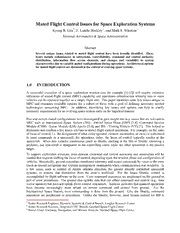
NASA Technical Reports Server (NTRS) 20060047744: Mated Flight Control Issues for Space Exploration Systems
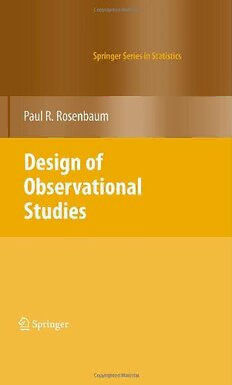
Design of Observational Studies

On Cambrian and Cumbrian Hills: Pilgrimages to Snowdon and Scafell by Henry S. Salt

c 2009 by Kyoungsoo Park
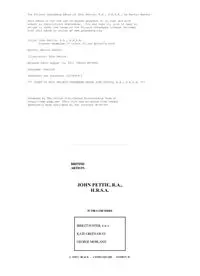
British by AUTHOR
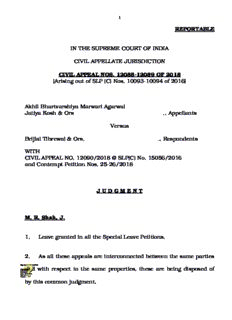
C.A. No. 12088-12089/2018
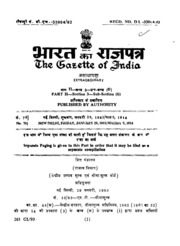
Union Government, Extraordinary, 1993-01-29, CSL, Ref. CSL

Korpuskatalog till doktorsavhandling "Vikingatida runbleck: Läsningar och tolkningar" / Korpuskatalog till "Viking-Age Runic Plates: Readings and Interpretations"

Bullets Billets by Bruce Bairnsfather
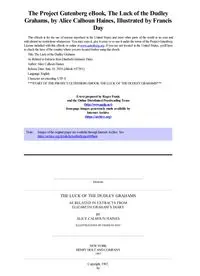
The Luck of the Dudley Grahams by Alice Calhoun Haines

Greek Government Gazette: Part 2, 2006 no. 1768
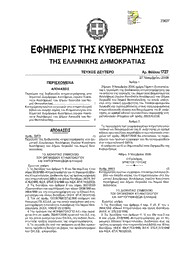
Greek Government Gazette: Part 2, 2006 no. 1727

Greek Government Gazette: Part 2, 2006 no. 1801
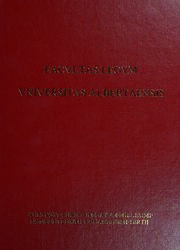
University of Alberta Faculty of Law yearbook (1993)

